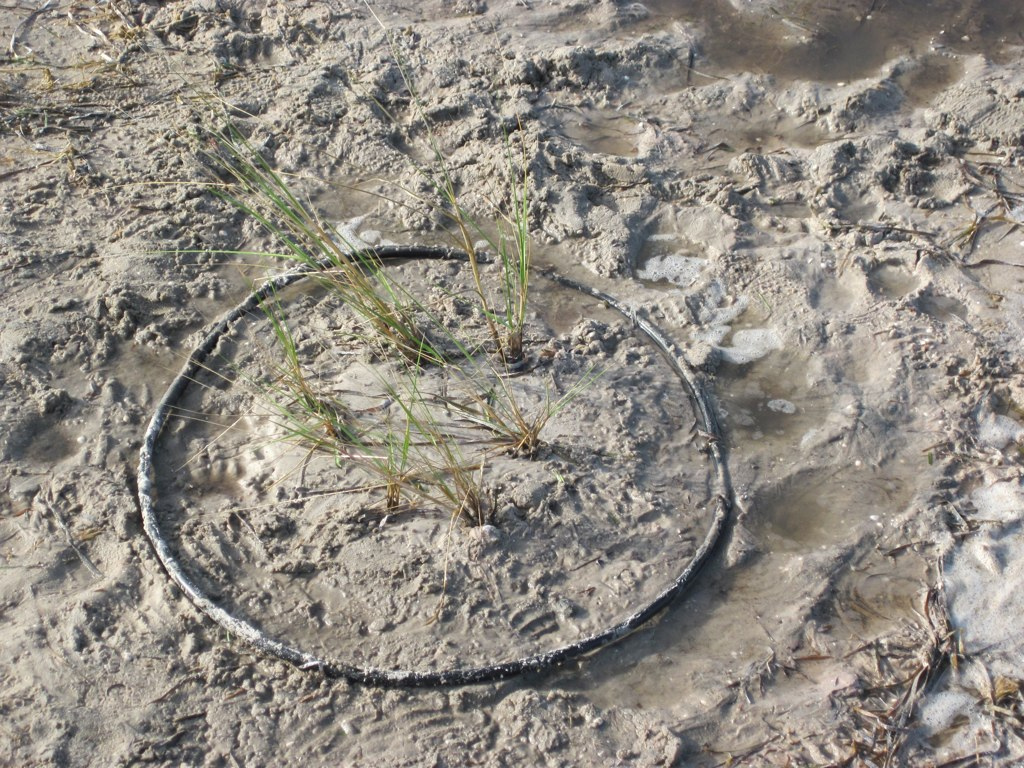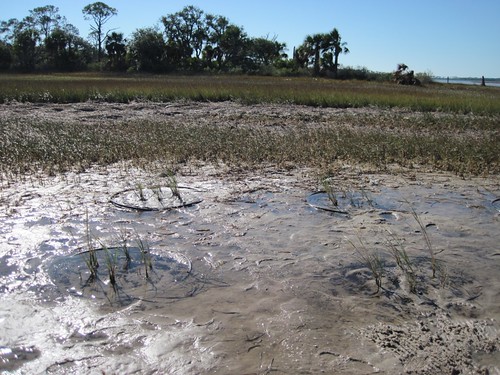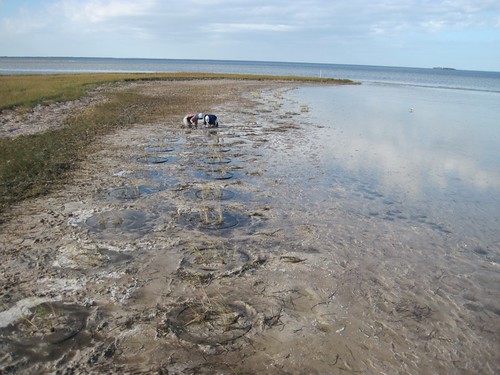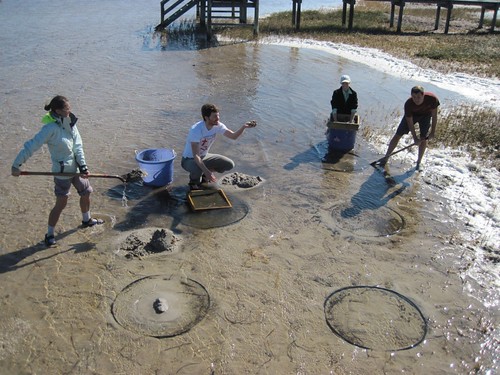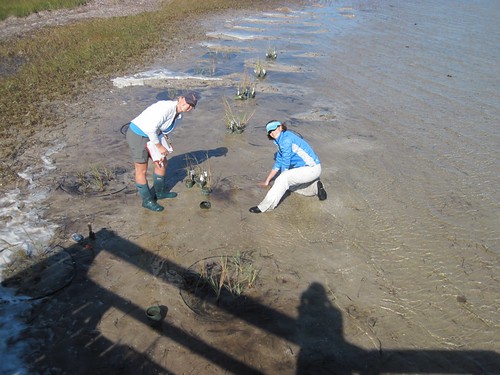Dr. Randall Hughes FSU Coastal & Marine Lab
As I mentioned in my last update, we have been working to set up a new marsh experiment in St. Joe Bay. The goal of the experiment is to see whether the genetic diversity of marsh cordgrass (Spartina alterniflora) affects how quickly or abundantly the plants grow, or influences the number of fiddler crabs, grasshoppers, snails, and other critters (like Ibis??) that call the plants home. But what is genetic diversity, exactly, and why do we think it may be important?
Spartina is a clonal plant, which means that a single “individual” or clone made up of many stems can dominate a large area (low diversity), or there can be lots of different individuals mixed together (high diversity). In our surveys of marshes in the northern Gulf of Mexico, we find that there can be as few as 1 and as many as 10 clones in an area of marsh about the size of a hula-hoop. You may notice that our experimental plots are about that same size, though we used irrigation tubing rather than actual hula-hoops (not as fun, but more practical and less expensive!). We’re testing whether the differences in genetic diversity (1 vs. 10 clones) that we see in natural marshes has any influence on the marsh community.
But why genetic diversity? We know from experiments by other researchers that Spartina clones grown individually differ in height, how many stems they have, and other characteristics. These same plant traits affect the critters that live in and among the plants – for example, periwinkle snails preferentially climb on the tallest plants. Because different animals may be looking for different plant traits, then having greater diversity (genetic and trait) may lead to a greater number of animal species that live in that patch of marsh. Or, a single clone may be the “best”, leading to higher numbers of animals in lower diversity areas.
As my title alludes, this experiment has taken a long time to come to fruition, in large part because it’s impossible to look at any 2 stems in a marsh and know for certain whether they’re the same individual or not. Unlike some clonal plants such as strawberries, where there are multiple berries connected by a single above-ground “runner”, Spartina has runners (aka, rhizomes) that connect stems of the same genetic individual under the ground, making it difficult to tell which stems are connected to which. We have 2 ways to get around this problem: (1) we use small snippets of DNA (analyzed in the lab) to tell clones apart, and (2) we start with single stems that we know are different clones and then grow them separately in the greenhouse until we have lots of stems of each different clone. It’s this latter part that has delayed this experiment – it has taken much tender loving care from Robyn over the last 2 years to get our Spartina clones to grow in the greenhouse to the point that we have enough of each clone (36 small flowerpots of each, to be exact) to plant in our experiment.
But plant we finally did! With lots of help from members of the Hughes and Kimbro labs, we got all the sand in the experimental plots sieved (to remove any existing root material) and all the plants in the ground the Thursday and Friday before Thanksgiving.
Now we get to wait and see (and take data) whether Spartina genetic diversity matters for the marsh plant or animal community. There won’t be any quick answers – the experiment will run for at least 2 years – but we’ll be sure to keep you up-to-date!



